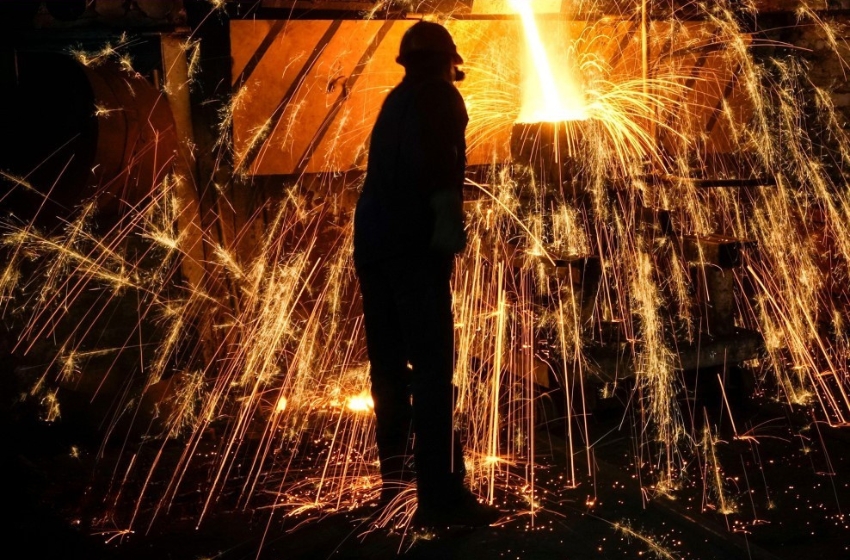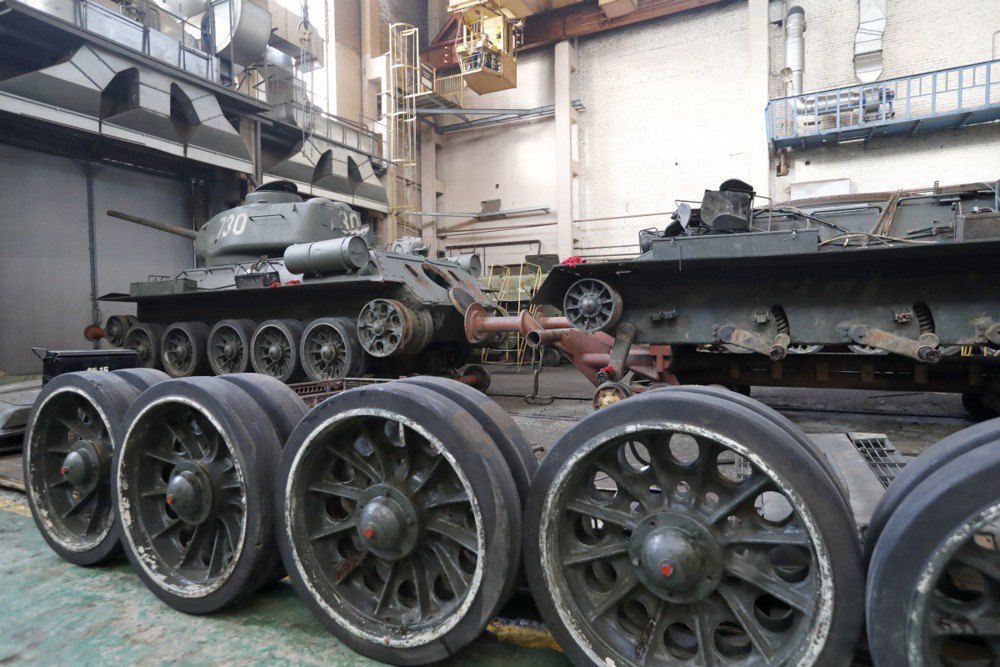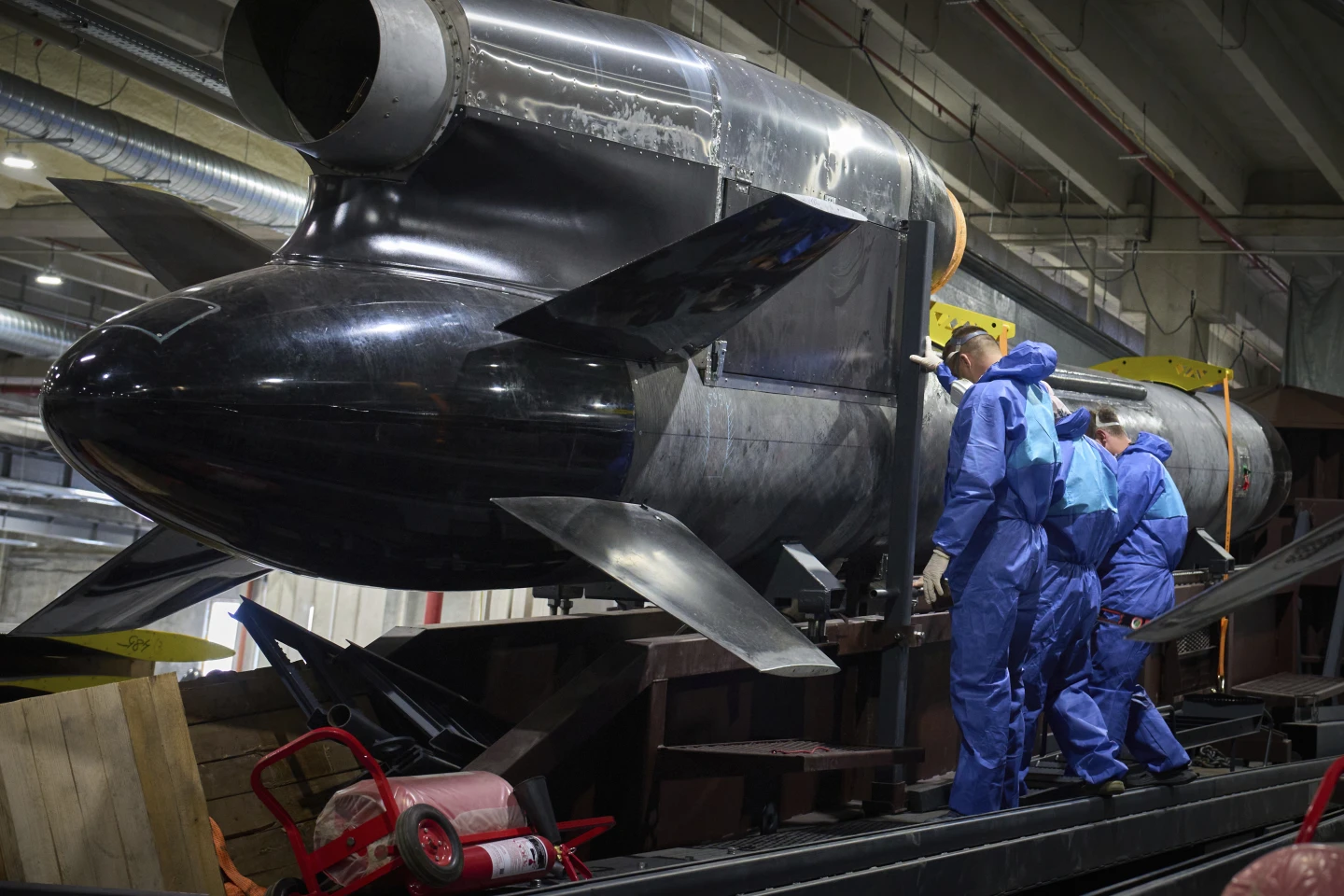The authoritative analytical center Royal United Services Institute (RUSI) has released a new report (by Oleksandr V Danylyuk and Jack Watling) dedicated to the issue of Russia's "industrial mobilization" in the full-scale war against Ukraine. The text of this work also covers the operations of Ukraine's defense industry and Western countries.
During Russia’s full-scale invasion of Ukraine, the Russian defence industry has managed to significantly increase defence production. Ukraine has also done this, although to a lesser extent. European members of NATO, meanwhile, faced substantial problems in expanding defence-industrial output, despite an abundance of funds.
Initially, Russia had a well-established strategy for military-industrial mobilization, which it began implementing early in the conflict. In contrast, Ukraine lacked a similarly detailed plan but was able to rely on its Soviet-era industrial base to restore its production capacity. Europe, however, faced the challenge of having neither a plan nor the data necessary to create one, which hindered efficient investment in defense production.
Additionally, Russia and Ukraine both maintained highly centralized coordination over their respective defense industries, which allowed for a relatively effective alignment of investments, supported by an understanding of their supply chains. Europe, on the other hand, lacked control and could only provide incentives to its industry, without a clear grasp of its own supply chains. This led to significant internal competition and an uneven expansion of defense capabilities.
While Russia succeeded in achieving a more effective military-industrial mobilization, it came at a much higher cost than is typically acknowledged. Russia not only increased defense spending but also redirected funds from other budgets and extended credit to defense companies to enable rapid growth. This approach will likely create challenges in the medium term. It is unrealistic to expect Europe, which is not engaged in war, to mobilize investment at a comparable scale. However, the fragmentation of Europe's defense market has led to highly inefficient spending. Improved coordination within Europe could enhance the return on investment.
The regulatory frameworks in Russia and Ukraine should not be viewed as models. In Ukraine, the regulation of core defense industries has led to the emergence of a large, unregulated, non-traditional defense ecosystem. In Russia, regulatory practices are dangerously lax and have often resulted in accidents. In Europe, the regulatory burden is often counterproductive, raising costs and slowing down the production of military equipment. Additionally, incentives for stockpiling and taking risks are misaligned, contributing to systemic policy failures. Regulatory reform and harmonization in areas such as testing, procurement, storage, and transportation of defense materials are critical for improving efficiency.
"In an environment where Europe must be able to deter Russia with reduced US support, Russia’s full-scale invasion of Ukraine should spur significant efforts to address what has been demonstrated to be a manifestly inadequate defence-industrial base," writes RUSI.
Conclusions
Comparing the Russian, European and Ukrainian defence-industrial response to the 2022 full-scale invasion of Ukraine reveals important lessons on how to effectively translate investment into defence-industrial output. These lessons relate to financing, the amount of latent capacity, the level of government control, and the regulatory environment of the products that emerge. On preparation, one of the clear differences between Russia, Europe and Ukraine is that Moscow had a mobilisation plan and stockpiles from which to draw. The mobilisation plan included legislative changes. The Russian industrial-mobilisation process was largely successful. Ukraine lacked such a clear plan but had many of the same mechanisms in place due to its Soviet legacy. It was therefore able to implement a level of industrial mobilisation, albeit at a slower rate. European states either had no plan or did not activate it. Nor did they have the data to rapidly develop and execute a plan. This lack of preparedness meant that European states were slow and took many false steps.
The lesson is simple: NATO members need industrial annexes to their national defence plans and these should be deconflicted between members. The contrast in government involvement in military-industrial processes is also important. In Russia and Ukraine, the government retained an extremely high level of ownership over defence enterprises, which allowed them to be highly responsive to government direction. In the US, the law allows the government to direct companies to service the defence industries, and key areas such as ammunition production remain part of the Department of Defense. These arrangements have made it possible to significantly expand output. Other countries such as France, where the government retains significant control over defence industries, have also largely succeeded in meeting planned output increases – with an increase in production of artillery systems and a steady increase in shell production – although their plans were not especially ambitious. For most of Europe, however, the market has proven a very poor driver in response to the conflict.
The incentives of the market – increased profits – are not necessarily aligned with maximising the volume of materiel produced for a given level of investment. Moreover, governments did not incentivise private industries to behave constructively. The refusal to give long-term orders or to consolidate orders, for example, made it very difficult for defence companies to justify the risk of expanding capacity rather than extending existing order books. The lack of government involvement in much of the supply chain also meant that governments lacked the data to understand where expanded capacity would most effectively enable increased production. Orders for shells without investment in special chemistry, for example, drove up prices more than it increased output. At the same time, governments did not create or enact legal mechanisms that would have allowed them to impose a sense of mission on defence industry. Given that governments are the customers of these enterprises, and there is limited investment beyond government, it is evident that the state did not exercise the leverage it could have.
Latent capacity is also relevant for industrial readiness. In Russia, there was significant latent capacity in its defence industries: civilian industries were pushed into the defence sector. In Ukraine, there was similarly significant underuse of the defence-industrial base prior to the full-scale invasion. More importantly, both countries had significant reserves of trained scientists and engineers with experience in the defence sector who could be brought back into the industry. This was existentially important to Ukraine. Across Europe, there is a large pool of talent in these areas, but the lack of mobilisation left a significant body that was not related to defence. Moreover, with very few countries producing defence materiel throughout the supply chain, there was significant unevenness in the availability of trained personnel. It has been especially difficult to attract workers to areas such as special chemistry, an area from which Europe divested for a long period. Thus, even where companies have tried to expand, they have struggled to find the right talent. The main impact of this has been to extend the lead times on capital, which has led to increased outputs. A key question for Europe’s readiness for a major conflict, therefore, is to understand the areas where it has surplus talent in one country that is needed in another, or where there is simply a lack of skills and it is worth investing to train personnel.
The financial landscape also differed. Russia has made massive investments in the defence industries, going well beyond the funds allocated to defence within the state budget. Such investments represent the partial mobilisation of the economy to a war footing, which has allowed Russia to significantly expand and modernise its defence-industrial enterprise, although this is at the expense of the rest of the economy, including critical sectors such as education and health. Much of the investment has gone into expanding production facilities, as up-front costs. It is anticipated that, in 2026, funds will be redistributed to other ministries, but this will not reduce the level of orders placed with the defence-industrial enterprise.
Ukraine had both similar latent capacities and high levels of state control of the sector. However, the government did not move to a full mobilisation footing. The lack of funds for the sector has also remained a major limiting factor in the expansion of critical defence enterprises and the scaling of production.
In Europe, in aggregate, large sums of money were made available. However, the investments in each country represent very modest increases in investment, such that they have not stimulated a proportional increase in defence manufacture. Relatively small, one-off orders have generally not incentivised the defence sector to expand its production capacity. Investment has also overwhelmingly focused on products rather than fundamentals in the supply chain, such that investment has driven competition in the higher tiers of the supply chain and increased cost, rather than expanded output. The profile of investment, therefore, has been poorly suited to enabling an expansion of defence-industrial output.
European countries should not embark on a level of mobilisation at the expense of the wider economy, as pursued in Russia, and the prioritisation of R&D spending in many European enterprises has undoubtedly produced highly capable weapons. However, NATO does emphasise the importance of deterrence to prevent the outbreak of war. Deterrence is psychological. In this context, the European response to the invasion may be deemed a failure: Russia assessed the policies that were pursued and deemed them inadequate. It is worth emphasising that a relatively modest increase in expenditure across NATO could have had a significant effect on Russian calculations, if that money translated into tangible outputs. At present, the debate on budget inputs across NATO is largely divorced from the debate about military outputs.
Finally, it is worth comparing regulation. In Russia, regulation has proven extremely lax for the storage of ammunition, working conditions and quality control. This has led to munitions striking Russia rather than Ukraine and stores being detonated by small numbers of low-yield munitions, and has arguably made defence-industrial output less efficient.
In Ukraine, the freedom to test equipment under battlefield conditions as well as easy access to training areas has enabled rapid R&D for both Ukrainian and European defence enterprises. At the same time, failures of security at enterprises have exposed them to significant risk from the Russian special services, while information handling and the approach to IP during the war has arguably reduced the willingness for collaboration from international partners, and the availability of investment capital.
In Europe, the general approach to regulation has been detrimental to increased defence production. In the first instance, restrictions on access to testing and evaluation facilities have led to large numbers of systems being produced that do not meet requirements. This is only discovered at a late stage. Where effective systems have been procured, the risk that businesses must take on in developing them before they are certified has hugely increased costs. Planning laws and other processes have also increased cost and reduced the speed at which defence enterprises can expand. Moreover, few countries have demonstrated a joined-up approach to such issues in government so that the UK, for example, has yet to achieve its announced ambition of expanding 155-mm artillery manufacture.
Perhaps the greatest difference, and the most important area of policy consideration, is that Russia and Ukraine ultimately have a single authority responsible for the enterprise. In Europe, each country is too small to be selfsufficient but there is no multinational coordination of the defence industry. Member states have opposed the EU playing such a role. NATO lacks authorities and information. As competitors, European defence enterprises tend to be very secretive about their capacity with both other governments and other companies. The result is that there is neither efficiency nor the data and authorities anywhere to rationalise the process. Coherence of multinational supply chains is in the interests of all European NATO members if they need to transition to war. So, whether in NATO or the EU, the establishment of an entity with this responsibility seems critical. If Europe wishes to deter war, it must demonstrate that it is developing the capacity to wage it.


















